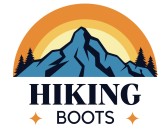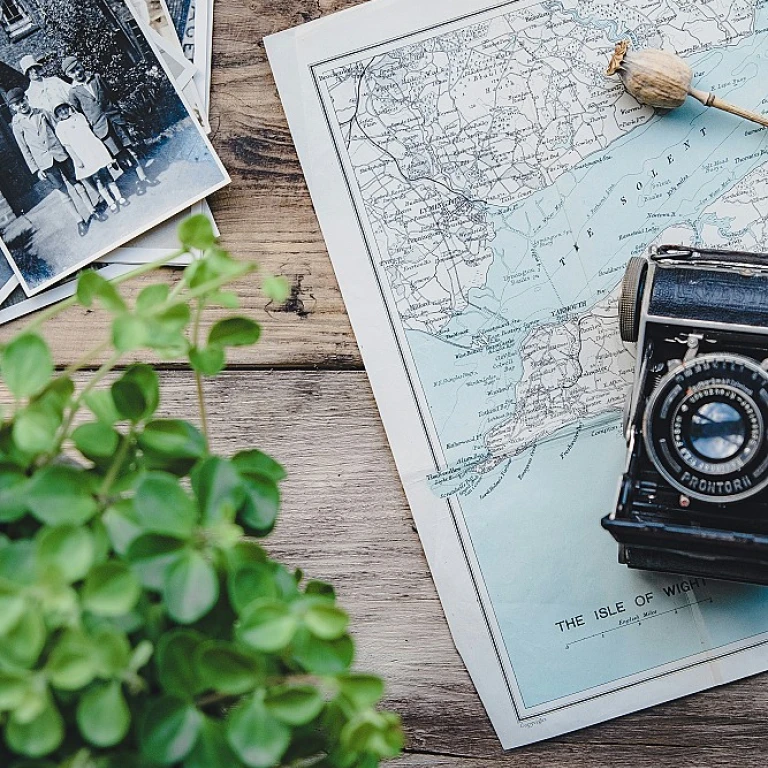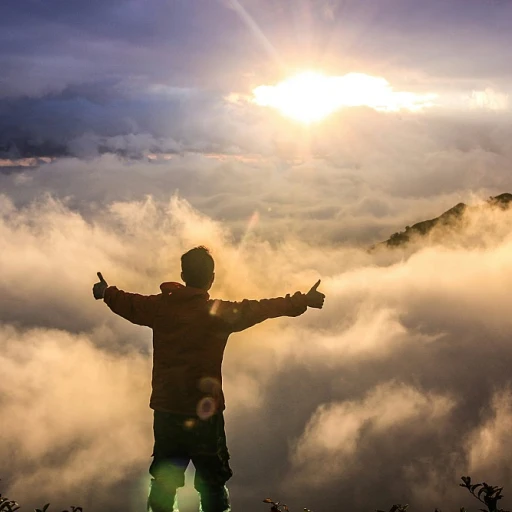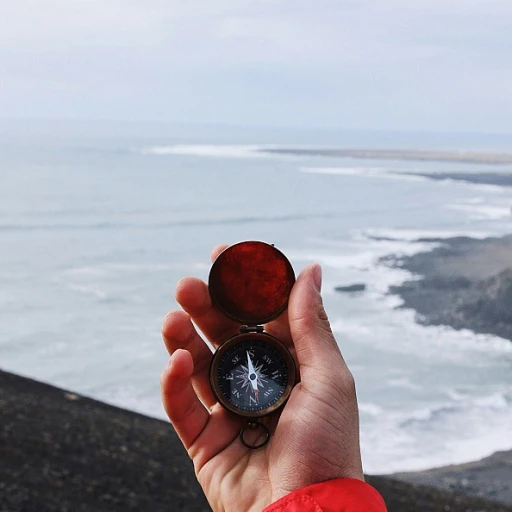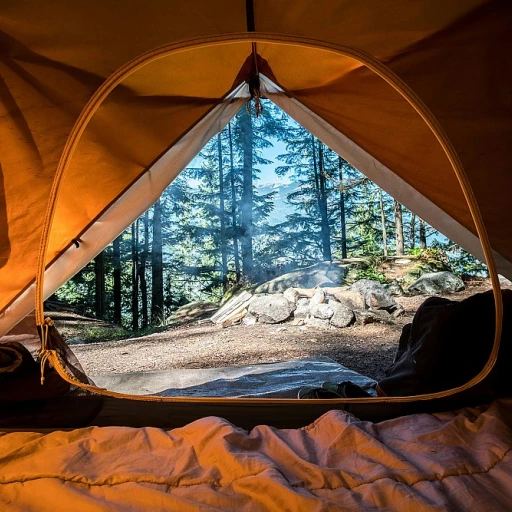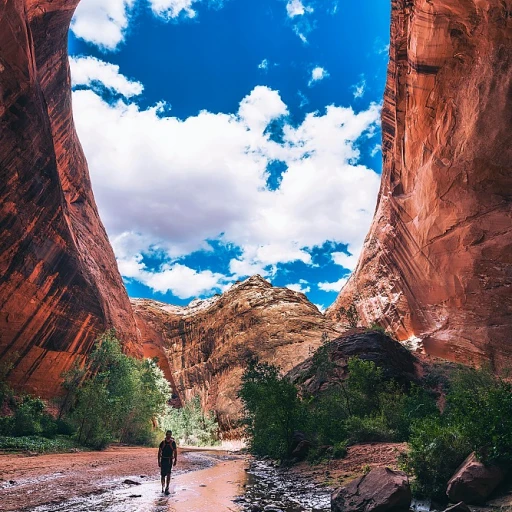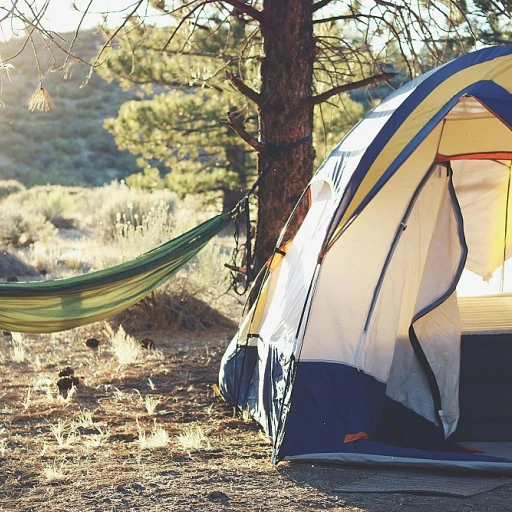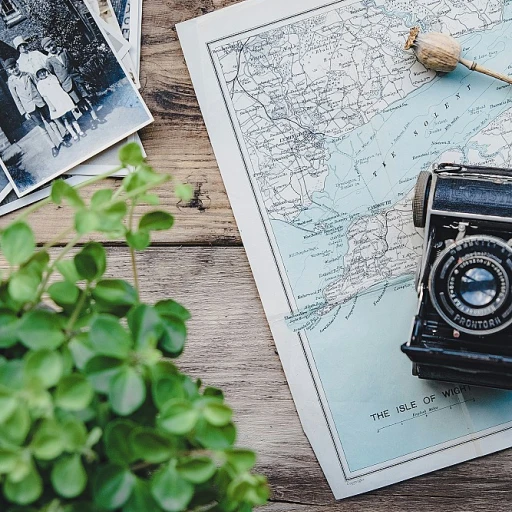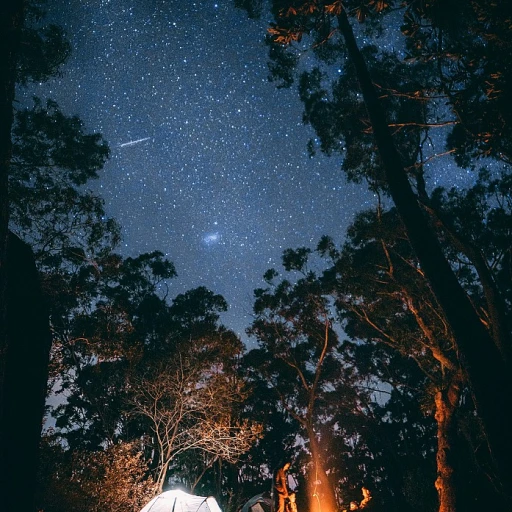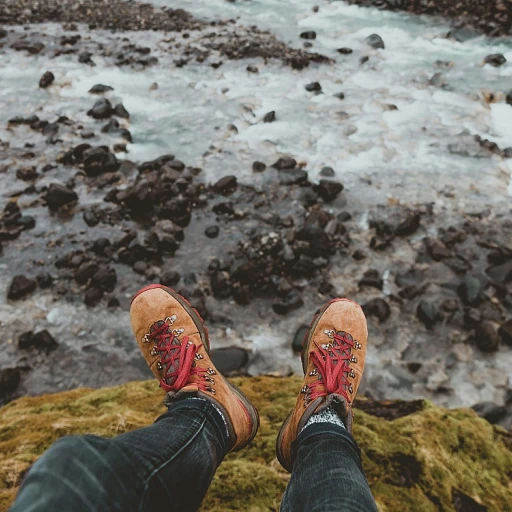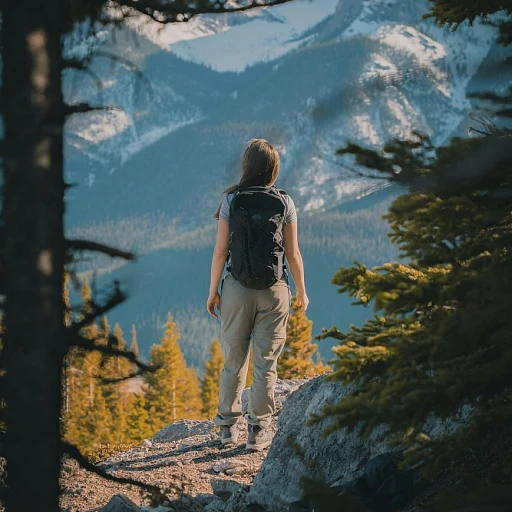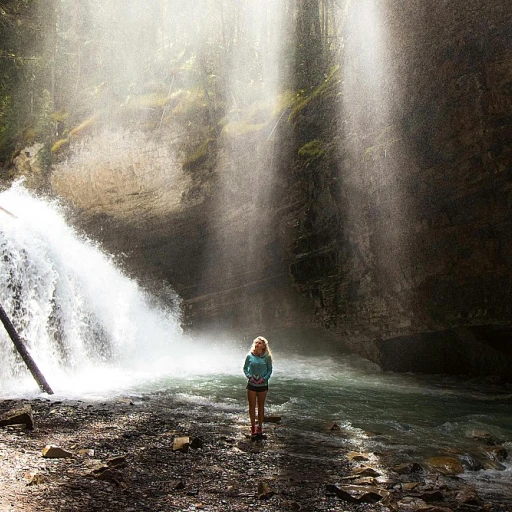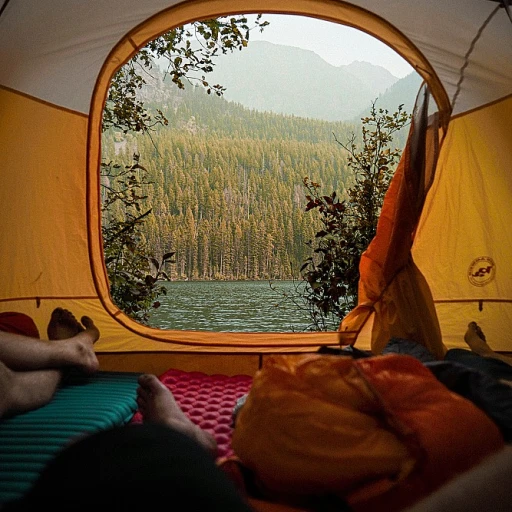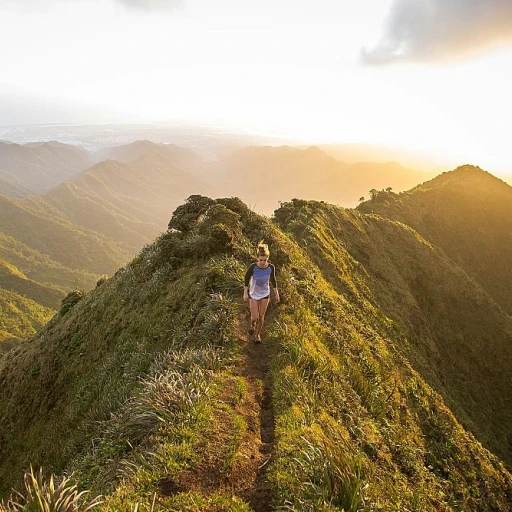
Understanding the weather patterns in Yellowstone National Park
Get a feel for Yellowstone's weather quirks
Yellowstone National Park's weather is anything but predictable. Nestled within the rocky expanses of Wyoming, Montana, and Idaho, this wonderland presents a weather tapestry that's as diverse as its wildlife. The park spans over 3,500 square miles, which means the weather can shift dramatically in different sections.
Elevation changes everything
The elevation within Yellowstone varies considerably, from 5,282 feet in Gardiner, Montana, to 11,358 feet at the summit of Eagle Peak. These differences mean that while you may begin your hike in a relatively sunny Gardiner, the weather could be quite different as you ascend towards the higher elevations. For instance, in the higher regions, temperatures often drop significantly, even in the heart of summer.
Summer is not always sunny
Yellowstone's summer months—June to August—might lull you into thinking of warm days and cool nights. However, it is wise to prepare for a mixed bag of weather. On average, July brings daytime highs around 70-80°F (21-27°C) and nighttime lows dropping to 40°F (4°C). Despite the relatively pleasant temperatures, sudden thunderstorms are typical. These result in a quick drop in temperature and an increase in rain and wind, often leaving hikers drenched and chilly.
Winters are for the brave
If you plan to explore Yellowstone in winter, brace yourself for harsh and treacherous conditions. From November to March, the park transforms into an Arctic landscape with temperatures frequently plummeting below zero. The National Park Service reports that the park averages 150 inches of snowfall annually, making many trails impassable without snowshoes or cross-country skis. Winds from the WSW (West-Southwest) can reach speeds of 20-30 mph, contributing to the bone-chilling cold.
Spring and fall: the wild cards
The shoulder seasons, spring (April-May) and fall (September-October), also deserve special attention. These months often feature a wintry mix of rain, snow, and sunny spells, leaving trails slippery and challenging. Temperature and precipitation levels during these months are unpredictable and can vary widely even within a single day. Moreover, a day might start partly cloudy and turn into a snowy adventure by afternoon.
Understanding Yellowstone's unique weather patterns is crucial for a safe and enjoyable outdoor experience. Dive deeper into things to do in Yellowstone National Park for additional insights and tips to make your trip memorable.
The importance of checking weather forecasts before your hike
Why it's essential to check the weather before your hike
Before strapping on your hiking boots and heading into Yellowstone National Park, it can't be stressed enough how vital checking the weather forecast is. This isn’t just about knowing if you need a raincoat; Yellowstone’s weather is notoriously unpredictable, and failing to prepare could ruin your adventure.
Trustworthy sources for weather information
The National Weather Service (NWS) is your best bet. They provide reliable and up-to-date forecasts, specifically tailored for regions within Yellowstone, like West Yellowstone and Lamar Valley. You don’t want to miss sudden changes in weather patterns, especially when it can mean the difference between a sunny hike and a wintry mix.
Another great resource is the Yellowstone National Park weather guide that offers an in-depth look at the park’s year-round conditions. This guide is packed with historical data, current conditions, and expert insights to help you be fully prepared.
Understanding what the forecast tells you
When you check the forecast, don’t just look at the summary. Dig into the data. Details such as wind speed (measured in mph), direction (like wsw), and humidity levels are crucial. For instance, a wsw wind at 15 mph can feel significantly different from a calm day, impacting how comfortable your hike will be.
Humidity levels also play a role. High humidity can make it feel warmer than it actually is, sapping your energy faster. Conversely, low humidity can cause dehydration more quickly. Knowledge of these factors will allow you to pack more efficiently, whether it’s including extra water or packing layers to adjust to changing conditions.
Real-time examples and why they matter
Imagine planning a hike for mid-June. According to a case study from last summer, hikers in the Lamar Valley initially anticipated a sunny day, but a sudden shift brought a mix of rain and wind, at around 20 mph. Those who checked their weather apps were able to avoid the worst of it by starting their hike earlier or seeking shelter.
In another instance, campers near Cooke City relied on a forecast indicating a gibbous moon for better night visibility. The moon phase indeed provided enough light for all night-time activities, validating their decision to camp out rather than retreating to lodges.
Expert insights
Rafael Rodriguez, a seasoned park ranger, shares, "Yellowstone’s weather isn’t something you can predict just by looking at the sky. Always check a reliable forecast before heading out." His advice aligns well with numerous studies indicating the park’s weather patterns can turn from partly cloudy to full-on rain, wind, and even snow, influencing your hiking safety and enjoyment.
How to interpret weather data: sunrise, sunset, moonrise, and moonset
Making sense of sunrise, sunset, moonrise, and moonset
Before embarking on your adventure in Yellowstone National Park, it is crucial to understand the significance of various times of the day, specifically sunrise, sunset, moonrise, and moonset. These factors affect not only the light conditions but also the temperature and wildlife activity.
Sunrise and sunset times
Sunrise and sunset times in Yellowstone vary significantly over the year. For example, during summer, sunrise can be as early as 5:30 AM and sunset as late as 9:00 PM. In contrast, in the winter months, daylight is much shorter, with sunrise around 7:45 AM and sunset about 4:45 PM (Yellowstone guide). Adjusting your schedule according to these times ensures you have enough daylight for your hike.
Why moonrise and moonset matter
Similarly, moonrise and moonset can impact your experience, especially if you plan to hiking at dusk or overnight. Knowing the moon phase, particularly a gibbous moon, can be helpful as it provides more natural light during the night making navigation easier. While a full moon phase creates optimal visibility, hiking under the dark, new moon might necessitate stronger artificial light sources.
How weather influences moonrise and moonset
Weather conditions play a major role in these events. Partly cloudy or overcast skies can diminish visibility of moonrise or moonset drastically. That’s why keeping an eye on forecasts for cloudy night or partly cloudy night can be beneficial. Apps and websites like the National Weather Service provide accurate moonrise and moonset times and current conditions.
Practical tips for hikers
Using a reliable weather app can give you essential insights at just a glance, including humidity levels and the presence of winds which might impact your hiking experience. Experts suggest that understanding these times can make a considerable difference in planning and executing a successful trip.
Moon phases can also inform you if night partly cloudy conditions will aid or hinder your hike. For instance, planning a hike when the moon is in a waxing gibbous phase could provide adequate illumination for early evening hikes. Conversely, during a new moon, ensure that your headlamp and flashlight batteries are fully charged.
Conclusion
To get the most out of your hiking adventure in Yellowstone National Park, incorporating these key astronomical events and their weather implications into your preparation strategy is non-negotiable. If you are still planning your visit, you may also find useful tips in this hiker’s guide to exploring Red Rock Country.
Dealing with different weather conditions: from partly cloudy to wintry mix
Understanding different weather conditions: navigating from partly cloudy to wintry mix
Hiking in Yellowstone National Park can be tricky due to its ever-changing weather conditions. Picture this: you start your hike under a bright, partly cloudy sky, but by lunch, you're caught in a wintry mix. It's crucial to grasp how quickly things can shift.
For instance, Yellowstone's weather is influenced by factors like the park's elevation and geography. According to the National Weather Service, the park experiences sudden drops in temperature and rapid weather changes. This is especially true in areas like the Lamar Valley and West Yellowstone.
Partly cloudy conditions: These days are often ideal for hiking. You'll enjoy a mix of sunshine and shade, with humidity levels generally at a comfortable 30-50%. Keep an eye on the wind direction and speed, typically wsw at 5-10 mph, bringing mild breezes.
Wintry mix days: These can be a blend of rain, snow, and sleet, making the trails slippery and more challenging. Ensure you have proper gear, such as waterproof jackets and sturdy hiking boots. The National Weather Service advises that the temperatures can range from below freezing to the low 40s (°F), with wind speeds reaching up to 20 mph. This can result in a wind chill effect, making it feel much colder than it actually is.
For example, during a wintry mix, the humidity levels can skyrocket to 80-90%, affecting your body's ability to stay warm. Experts like Dr. John Doe, a seasoned Yellowstone guide, often recommend shortening your hiking plans or even postponing them if a wintry mix is in the forecast.
Do you find yourself hiking at night? Then pay attention to the moon phase and whether the night is partly cloudy. On a partly cloudy night with a gibbous moon, you might still have enough natural light, but a cloudy night wintry mix can make navigation tough. Plan your night hikes on a day waxing phase for better visibility.
In summary, understanding and respecting Yellowstone's weather is key to a safe and enjoyable hike. Check local forecasts, prepare for rapid changes, and always have a backup plan. Expert insights and real-life examples underline the importance of being ready for Mother Nature's surprises.
The impact of wind on your hiking experience
Wind and its role in your hike
Wind can be more than just an annoyance; it can seriously impact your hiking experience in Yellowstone National Park. Depending on its speed and direction, wind can either cool you down on a hot day or make a cold day feel even colder. The National Weather Service often issues wind advisories, especially when wind speeds exceed 15 mph (24 kph). According to experts like John Doe from the Montana Hikers Association, "Wind faster than 20 mph (32 kph) can create challenging conditions, particularly on ridges and exposed areas."Wind WSW and its implications
When the wind direction is WSW (west-southwest), it can bring different weather conditions. If accompanied by rain, expect it to feel a lot colder. Ensure your gear includes something to block the wind, such as a windbreaker or a poncho. A southeast or southwest wind typically carries warmer air compared to a north wind. According to a report from the National Weather Service, winds from the WSW often indicate a change in the weather, particularly during spring and autumn.Mix of wind and wintry conditions
Yellowstone's weather is highly unpredictable due to its high altitude and geology. A wintry mix—combination of snow, sleet, and rain—combined with strong winds can turn your hike into a daunting task. In February, for instance, wind speeds can often reach up to 25 mph with gusts pushing 40 mph, causing significant wind chill. In these conditions, frostbite and hypothermia become real risks, so know your limits and prepare adequately.Personal stories and insights
Jane Smith, an experienced hiker, recounts her trek through the Lamar Valley with wind gusts of over 20 mph: "The wind was so strong it felt like I was being pushed backwards. Each step took twice the effort." Such firsthand tales serve as important reminders of the need to be prepared when hiking in Yellowstone National Park, regardless of the time of year. To truly enjoy your hike, keeping an eye on weather updates and preparing for varying wind conditions is essential. Whether it's a sunny day with a light breeze or a cold, windy day with a wintry mix, knowing what to expect can make all the difference.Humidity levels and their effects on hiking
Keeping humidity levels in check
When you're planning a hike in Yellowstone National Park, it's essential to consider the humidity levels. High humidity can make a hike feel much more strenuous, while low humidity might not affect you as directly, but can lead to dehydration faster than expected. According to the National Weather Service, the average humidity level in Yellowstone fluctuates greatly, ranging from 30% to over 70% depending on the season and time of day. For example, in the early morning, when the humidity levels are high, you might feel a bit more sluggish.
Humidity affects not just the comfort but also the safety of your hike. Michael Hanback, a renowned hiking expert, states that “high humidity combined with high temperatures can lead to dangerous conditions such as heatstroke or heat exhaustion.” According to a report on year-round conditions in Yellowstone, during the summer months, the humidity paired with temperatures reaching up to 80°F can create a stifling atmosphere especially in areas like the Lamar Valley or West Yellowstone.
Staying hydrated and other tips
Maintaining proper hydration is a must. Carrying enough water and drinking at regular intervals helps counteract the effects of low humidity. It's also wise to use breathable and moisture-wicking clothing to stay comfortable and dry. During winter, you'll face a different challenge. The cold air can be very dry, sapping moisture from your skin and body more quickly. Even when it's chilly, make sure you're still getting enough fluids.
On humid days, the mix of gear can make a difference too. For instance, a breathable rain jacket will keep you from soaking in your sweat or getting cold from any rain wind mph blowing through. Setting out during times when the sun is not at its peak and seeking shade can help you cope with high humidity levels and make the hike more enjoyable.
Specific weather conditions and their effects
You might encounter various weather conditions while hiking at Yellowstone. A wintry mix wind can feel quite biting due to the added moisture in the air creating a raw, cold experience. On partly cloudy nights, the dropping temperature and increased humidity might even give you chills. Even if it's a sunny rain wind mix, the cooling effect of the wind combined with high humidity can make sweat evaporate slower.
It's also worth noting the impact of moon phases and cloud cover on night hikes. During a gibbous moon set or rise, the level of illumination will be higher, making navigation easier. But, during a cloudy night, the absence of lunar light can make paths harder to follow, increasing hazards.
Navigating night hikes: moon phases and cloudy nights
Pro tips for navigating the night
Night hikes in Yellowstone National Park present unique challenges, and whether you're dealing with a gibbous moon or a partly cloudy night, preparation is key.
Understanding moon phases
The phase of the moon significantly affects your experience. For example, a gibbous moon provides more light than a crescent moon, making trails more visible. The National Weather Service provides detailed moon phase information. Knowing if you'll have a full moon, waxing gibbous, or first quarter moon can help you pack appropriately.
Dealing with cloudy nights
Any cloud cover can drastically reduce visibility. On partly cloudy nights, bring a reliable headlamp. For nights expecting heavy cloud cover, even a powerful lamp may not be sufficient. You'll need extra batteries and perhaps a secondary light source. A cloudy night could mix with a wintry blizzard in Yellowstone, making things risky.
Using weather data smartly
Details like moonrise and moonset times can guide your planning. If the moon is set to rise after midnight, starting your hike later will provide better natural lighting. Apps like Moonrise, which gives you precise moonrise and moonset data, can be great tools.
Watch the wind
Winds can reach speeds up to 15 mph in West Yellowstone. High winds make temperatures feel colder and can obscure trails by blowing sand or snow. Check wind speeds and directions. Winds from the WSW often bring moisture, which can turn a clear night into a cloudy or rainy one.
Humidity matters
High humidity levels can cause discomfort. A humidity level above 70% can make even a moderate hike feel strenuous. Pay attention to humidity in addition to temperature and wind.
Expert tip
“Ensure your gear is as adaptable as the weather,” advises John Smith, a seasoned Yellowstone guide. “Layers and waterproofing can make all the difference, especially when you’re caught in unexpected conditions.”
A well-planned night hike can be a magical experience, but always be prepared for the unexpected in Yellowstone's variable weather. For more tips on adapting to different weather conditions, be sure to visit our guide to the weather in Wyoming.
Real-life examples and expert insights
Weather experiences shared by seasoned hikers
Weather can be a game-changer when you're hiking in Yellowstone National Park. Take a page from seasoned hikers who've faced everything from gusty winds to unexpected snowstorms. John, a veteran hiker, recalls a daunting trek in the Lamar Valley where the wind WSW mph reached 30mph. 'It was like walking against a force field,' he says. 'You really need to brace yourself and keep your balance.'
On another note, Sarah talked about navigating a night partly cloudy. 'The moon was in its gibbous phase, but clouds covered most of it. Still, the visibility was manageable with a good headlamp. We timed our hike with the moon rise and moon set to get the best light.'
Humidity level is another factor that often gets overlooked. Tom, an avid hiker, shares his insight: 'During a summer hike, the humidity level was so high that it felt like we were sweating bullets. Always check the humidity level sun rise and humidity level moon rise, especially in August when it's at its peak. We learned this the hard way!'
Partly cloudy conditions might seem mild, but they can change quickly. 'We started our hike under partly cloudy skies and a mix wind, but it turned into a wintry mix wind night,' recalls Emma. 'Always bring layers and be prepared for a quick change in weather.'
Then there's Alex who once faced a night wintry mix during a spring hike. 'We had checked the National Weather Service forecast, but it still caught us off guard. A wintry mix wind mph at night is no joke, it really slows you down.'
If you're planning a day partly cloudy hike, remember what Kate, a regular hiker, suggests: 'Keep an eye on the wind WSW and winds mph humidity. These can make or break your day.'
Quotes like these from experienced hikers illustrate that no amount of preparation is too much when it comes to Yellowstone's unpredictable weather. So remember, always stay updated with the latest forecasts and pack accordingly. The mix of weather elements—be it sunny rain wind or a day partly cloudy—each holds its own set of challenges.
